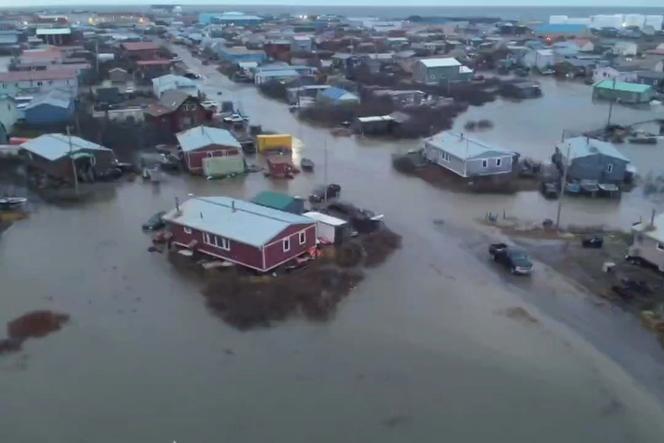


One of the "most significant" airlifts in Alaska history is underway to evacuate hundreds from villages on the state’s southwest coast that were inundated by the remnants of Typhoon Halong last weekend, officials said Wednesday. The storm slammed into coastal villages, bringing a record storm surge that swept away homes – some with people still inside – and left 1,500 residents in makeshift shelters.
One person died and two remain missing following the storm.
The communities of Kipnuk, population about 715, and Kwigillingok, population about 380, had asked the state to evacuate residents, said Jeremy Zidek, emergency management office spokesman.
About 300 evacuees were being brought to Anchorage, hundreds of miles from the battered communities, according to the state Department of Military and Veterans Affairs. They were going to the Alaska Airlines Center, a sports and events complex with capacity for about 400 people, Zidek said.
Zidek could not say on Wednesday evening where exactly those evacuees were from. He said some people in those communities may choose to stay back or to stay with others. Shelter space in the southwest Alaska regional hub of Bethel had been reaching capacity, officials said.
The weekend storm brought hurricane-force winds and pushed the tide line 6 feet (1.8 meters) above normal in two communities near the Bering Sea coastline, Kipnuk and Kwigillingok, breaking records, according to the National Weather Service.
The crisis unfolding in southwest Alaska, where communities are accessible by boat or air, has drawn attention to Trump administration cuts to federal grants aimed at helping some small, mostly Indigenous villages prepare for the ravages of storms or mitigate their disaster risks.
A $20 million US Environmental Protection Agency grant to Kipnuk, a village inundated by floodwaters, for example, was terminated by the Trump administration, a move challenged by environmental groups.
